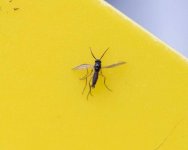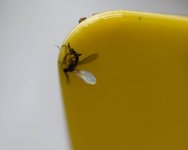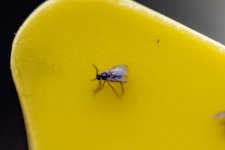Clayton_Bigsby
Active member
Been having mysterious deficiency problems with my organic soil grow for months now. Have tried just about everything treating the problem like an over fertilization, deficiency, light burn problem until i found a thread about fungus gnats. Checked my soil and put some yellow sticky traps down and sure enough theres something flying around and larva in my soil. I just need an ID to confirm what i have now.





